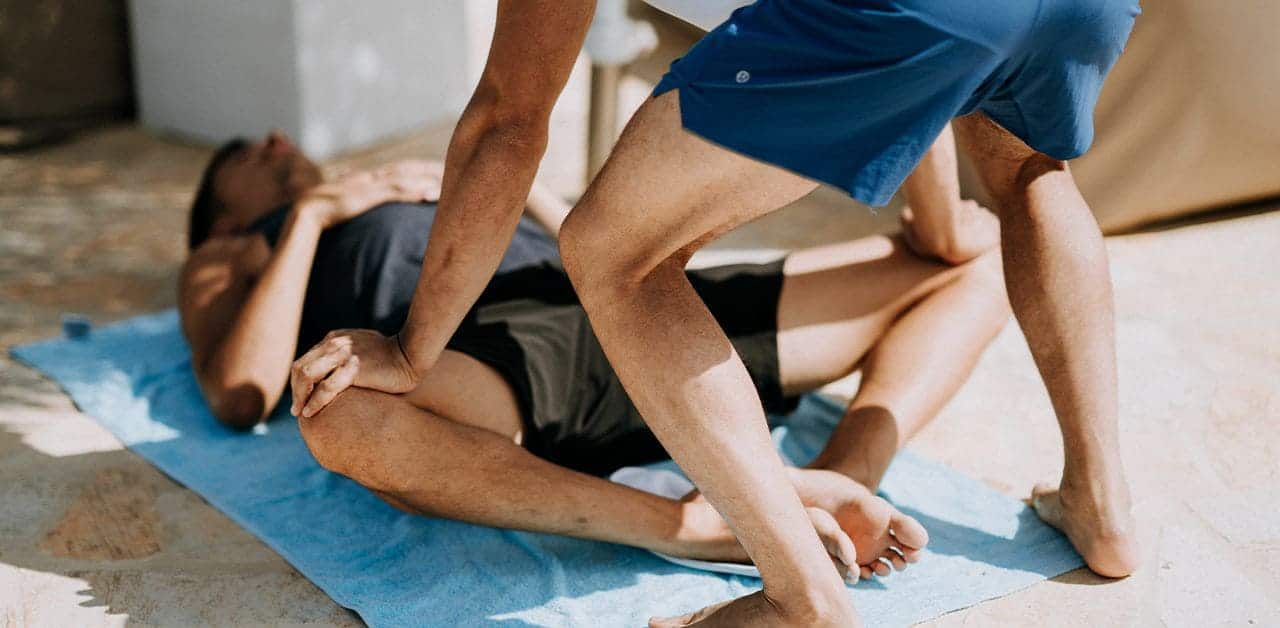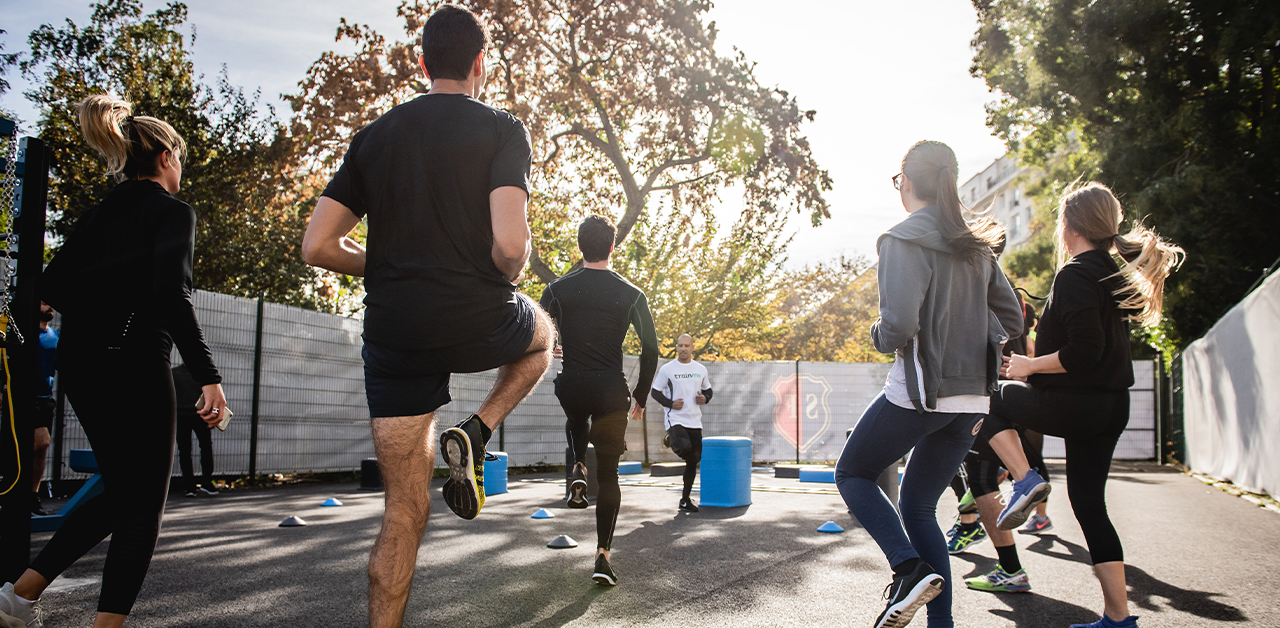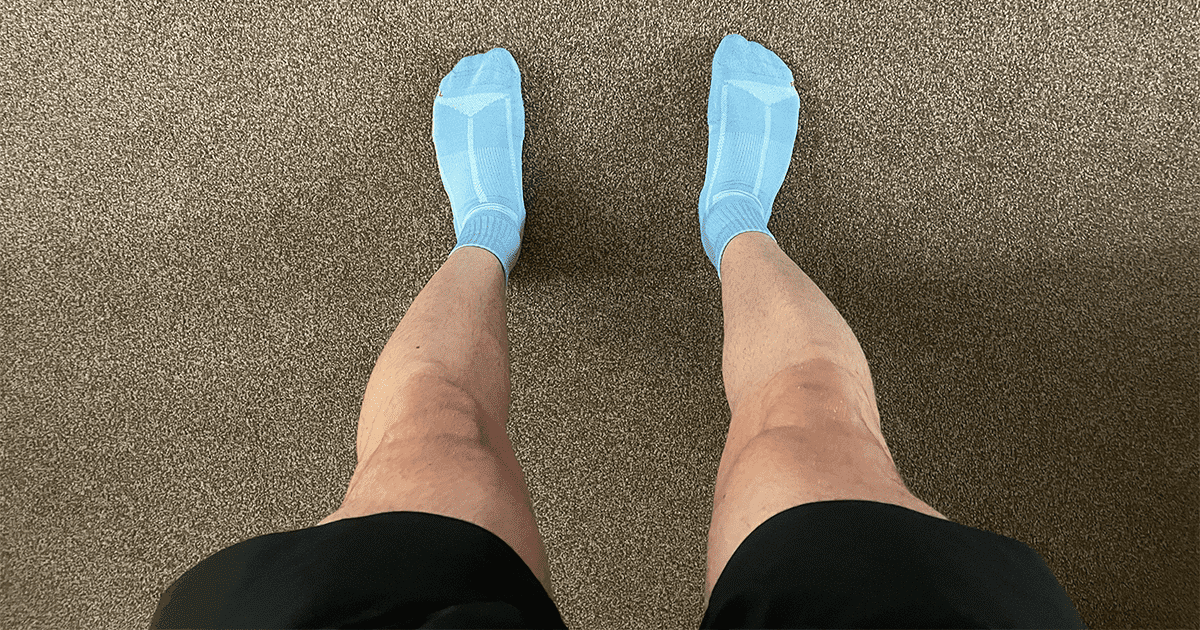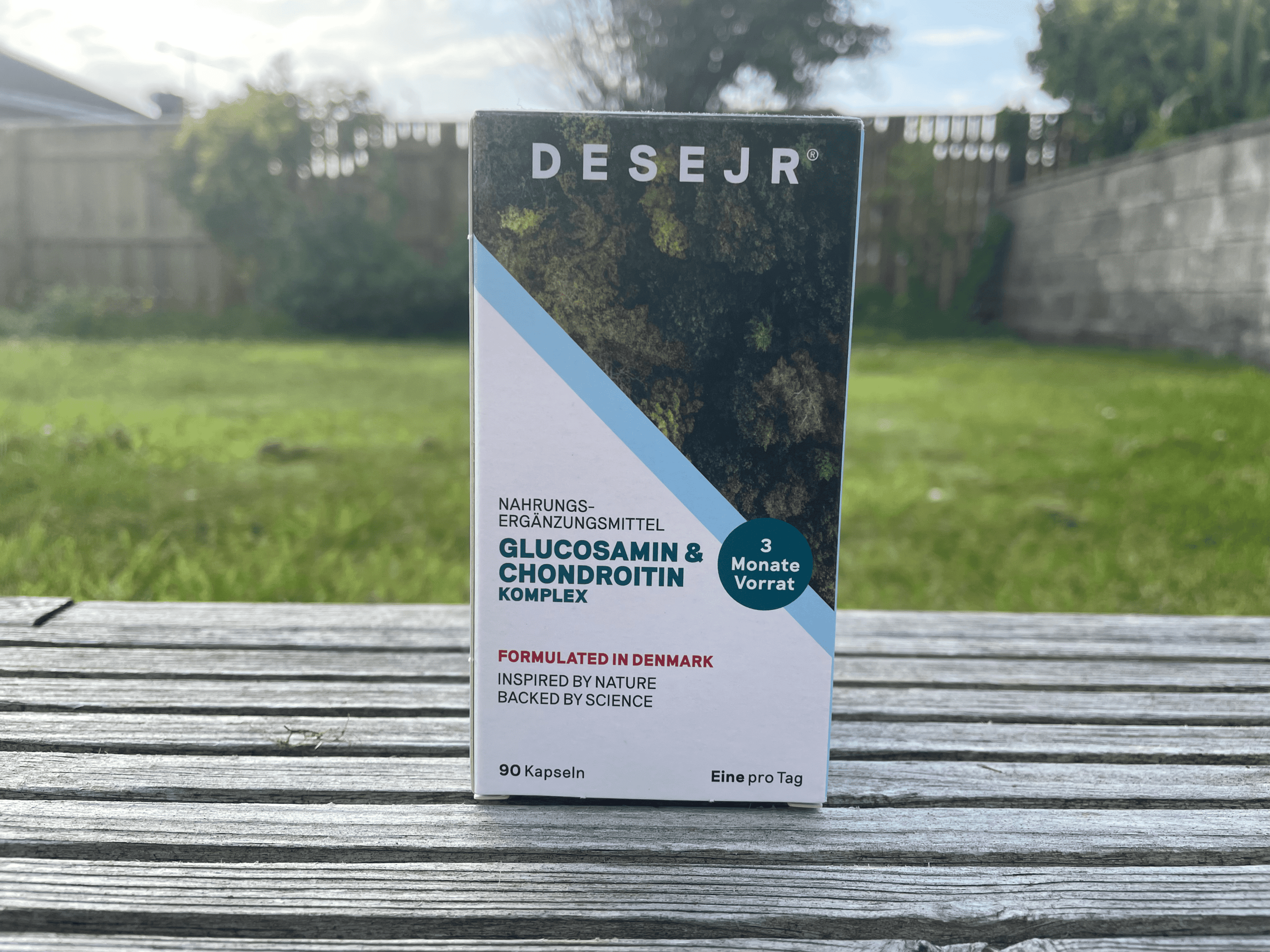Groin pain after running: what you need to know
Recently experienced groin pain after running? If so, you’re not alone – here’s everything you need to know.
 Groin pain after running can make you dread your regular training sessions. Whether you experience the pain during your run or just once you’ve stopped, it is something that no runner wants to have to deal with. There are many different causes of groin pain, and unfortunately, it’s something that many individuals experience when training.
Groin pain after running can make you dread your regular training sessions. Whether you experience the pain during your run or just once you’ve stopped, it is something that no runner wants to have to deal with. There are many different causes of groin pain, and unfortunately, it’s something that many individuals experience when training.
If you’ve been dealing with groin pain after running, it’s important to know you aren’t alone with this issue. To help you out, today we’re going to discuss the most common reasons for groin pain after running and how you can treat groin pain if you are currently suffering from this common injury or discomfort.
What are the causes of groin pain during or after running?
 Groin pain is something that both professional and amateur runners may experience during their lifetime. There are many reasons why this can occur, and quite often, it’s something that you can’t do much about to stop it from happening in the first place. These are a few of the most common reasons individuals may experience groin pain running:
Groin pain is something that both professional and amateur runners may experience during their lifetime. There are many reasons why this can occur, and quite often, it’s something that you can’t do much about to stop it from happening in the first place. These are a few of the most common reasons individuals may experience groin pain running:
- A general overuse injury – if you are a regular runner, this injury may occur from overuse. This is more likely to transpire if you’ve recently increased the intensity or regularity of your training sessions due to an upcoming event.
- A result of overstriding when running – Stretching your strides too long as you run can put unnecessary strain on the groin. Movements that involve you lengthening and then contracting the muscle may result in groin strain, and over time, this could lead to a tear in this region.
- Muscular imbalance – A muscular imbalance is something that many runners struggle with but perhaps aren’t fully aware of. If you are putting more weight or pressure onto one leg, the other leg may try to compensate for this pain, resulting in pain in your groin after running.
- Trail running – It’s believed that groin pain after running is more common in trail runners, especially individuals who change over from road to trail running.
- Weak hips or glutes – Strength training is crucial to add to your weekly training routine, as otherwise, you may find you have weaknesses that result in injuries, such as groin pain or other weaknesses.
- Overtraining – Overtraining is a huge issue for runners, and when you don’t give your body enough time to rest and recuperate, you may find that you experience groin pain running. Give yourself days each week to rest and recover in order to avoid overexerting your muscles, preventing further pain.
-
While these are the most common reasons for groin pain, you may also find this occurs as a result of straining your adductor muscle. This often happens within ball sports but could happen when you jump or turn quickly as you run. If you’ve experienced a fall during a run, groin pain could also come about as a result of this either immediately or as an after-effect of the fall. Ultimately, overusing any muscle in your body could lead to pain or discomfort after some time, which is how groin pain often comes about.
How to treat groin pain after running
 If you’ve recently experienced a groin injury running, the good news is that there are ways to overcome this issue both temporarily and in the long term. The grade of your groin strain will impact how quickly you are able to recover from this injury, and whether you are still able to walk or run again with groin pain.
If you’ve recently experienced a groin injury running, the good news is that there are ways to overcome this issue both temporarily and in the long term. The grade of your groin strain will impact how quickly you are able to recover from this injury, and whether you are still able to walk or run again with groin pain.
Immediately after running, if you notice groin pain, your number one aim should be to reduce pain or swelling in the area. Follow the common muscle injury routine: rest, ice, compression, and elevation. Don’t ice this area for more than 20 minutes at a time, and make sure you give your groin area a 20-minute break before you start again with icing the area. Don’t place ice directly on the groin, or you may damage your skin. You may also want to consider taking anti-inflammatory medication if you are struggling with the pain and can’t rest or sleep properly with the injury.
If your injury is particularly severe or you find this to be a long-term issue, we encourage you to seek further help. Physical therapy, massage, stretching, and heat therapy can be used to alleviate the pain and work to prevent further issues in the long term. The worst-case scenario with groin strains is surgery to repair the torn fibres, so the sooner you can take preventative measures, the better. However, often this is not required, and rest and proper medical attention from a physio or doctor should be sufficient.
Rest is the key to recovering from any injury, and you’ll want to try and take some time off when your injury first occurs to avoid it becoming much more adverse. You may need to visit a doctor if you don’t find the pain goes away after a few days or seek out a physical therapist. In the long term, you’ll want to think about ways to avoid this issue from returning, and these are things that all runners should be considering anyway to keep themselves fit and healthy for many years to come. (These are also things your physiotherapist will discuss with you, so if in doubt, always seek professional support.)
Also, it is worth noting that there are some exercises you can also consider to minimise groin pain after running. However, if you have a very serious groin injury, you’ll want to speak to a physical therapist before performing these exercises. A hip adductor stretch should be held for 20 to 30 seconds and can be performed lying on the floor while dropping your bent knee down to the ground. A butterfly sit strength and resistance band stretch can also help to ease pain in this area.
How to avoid groin pain after running
 Although we’ve shared the ways to treat groin pain after running, it’s important for runners of all ages and abilities to consider the ways they could avoid this issue occurring in the first place.
Although we’ve shared the ways to treat groin pain after running, it’s important for runners of all ages and abilities to consider the ways they could avoid this issue occurring in the first place.
These are a few of our top tips for avoiding groin pain after running:
- Improve your hip strength – So often, groin pain after running comes about as a result of imbalances in your hip flexors, glutes, and pelvic muscles. There are many different exercises you can do in order to improve your strength in this area, and any keen runner should be taking part in regular strength training sessions to avoid injury. Pelvic floor exercises, glute bridges, and resistance band workouts can all be a great way to improve your hip strength. A low range of motion in your hip can also cause this issue, so ensure to keep this in mind when training.
- Rest – While we’d all love to train most days each week, rest is super important for runners and all athletes. Especially if you are a beginner or intermediate runner, you’ll want to build up slowly to running more often instead of pushing your body too far early on. If you do feel even the slightest of pain in this area, make sure you take some time out or ease off from your training to avoid it getting worse.
- Warm-up before your run – Before you head out on a run, a warm-up is crucial. Take just five to ten minutes to warm your hips and muscles up to avoid injury or groin pain after running. Following your run, also make sure you are stretching your legs and body out to stop yourself from seizing up.
- Consider the surfaces you are running on – If you are used to training on roads or on a treadmill, be careful if you change to trail running suddenly. Take things slowly to begin with, especially when exploring a new route to avoid any sudden turns or jumps that may put extra pressure on your joints and muscles and cause a groin injury running.
-
Is it okay to run with a groin strain?
 For anyone who’s recently experienced a groin strain, you are no doubt wondering if you are okay to keep up with your training. If the pain isn’t too intense, to begin with, and you can still run without much pain, then you may be okay for now. However, as soon as the pain lasts for a few days, you’ll need to start treating it like an injury and take time off to recover.
For anyone who’s recently experienced a groin strain, you are no doubt wondering if you are okay to keep up with your training. If the pain isn’t too intense, to begin with, and you can still run without much pain, then you may be okay for now. However, as soon as the pain lasts for a few days, you’ll need to start treating it like an injury and take time off to recover.
Generally, when you first feel pain, you should keep a close eye on it to avoid further damage. Try to take things slower for a few days and go for shorter runs. Stop if the pain appears when running or becomes too intense, as that’s a clear sign you are pushing your body too far.
The bottom line
Groin pain after running is something that no runner wants to experience. By following the advice listed above, you can help to reduce the chance of this occurring in the first place and then treat groin pain after running if you do notice this issue following your training sessions.
Runners deal with many different aches and pains throughout their lives, and it’s often an unavoidable part of the sport. However, by avoiding overtraining your body and giving yourself enough time to rest, you can prevent these issues in the future and still enjoy running each week.
Frequently asked questions
Finally, to finish we’ve gathered together an abundance of frequently asked questions about groin pain after running. You will find these below:
Why does my groin hurt after running?
There are numerous reasons why you may be experiencing pain in your groin after running, such as overstriding, weak hips or glutes, overtraining, or an overuse injury.
How to reduce groin pain?
Regularly stretch and ice the area to actively reduce pain in the groin.
Is it okay to run with a groin strain?
If the pain is not severe, then you can continue running. However, if the pain worsens or lasts for a few days, then we recommend taking some time off to recover.
How long should I rest for with a groin strain?
Ultimately, this depends on how severe the strain is. However, one to two weeks is a good rule of thumb. If the pain does not ease within this time, you should visit a doctor or physiotherapist for further advice and potential treatment.

Matthew is a lifelong runner, chief tester of all products, the founder of Running101, and freelance content writer for active brands. When he’s not writing, he enjoys lifting weights, cycling in the Lake District, and watching fast cars drive in circles on a Sunday. He also has a BA in sport, exercise and physical activity from the University of Durham.




